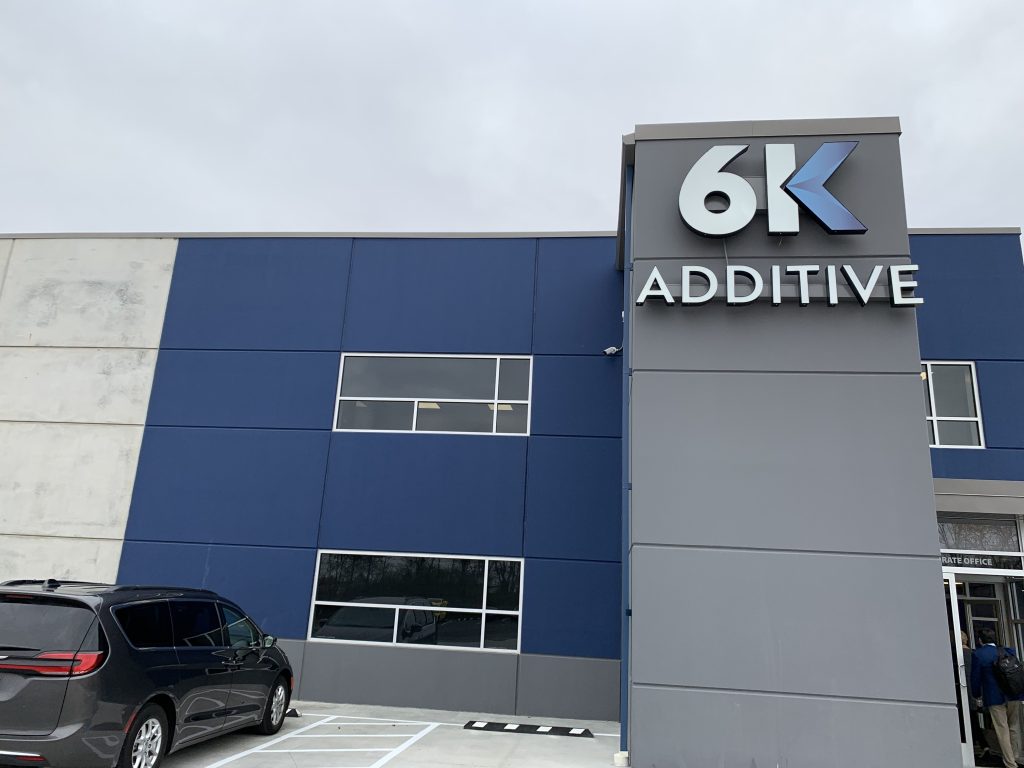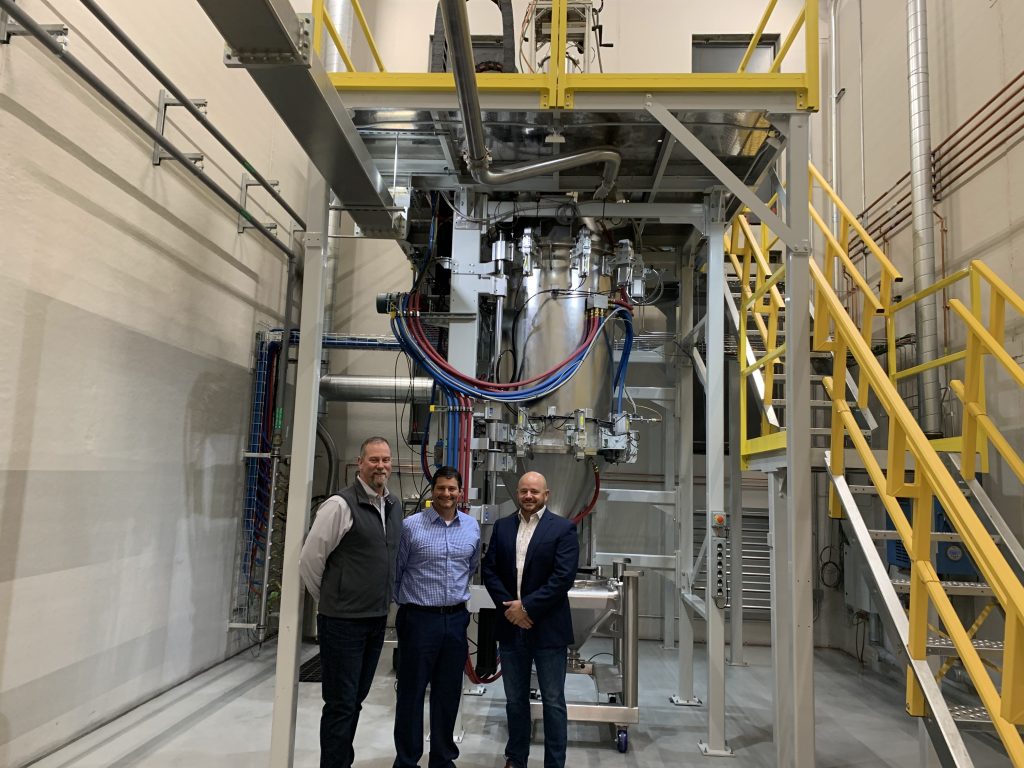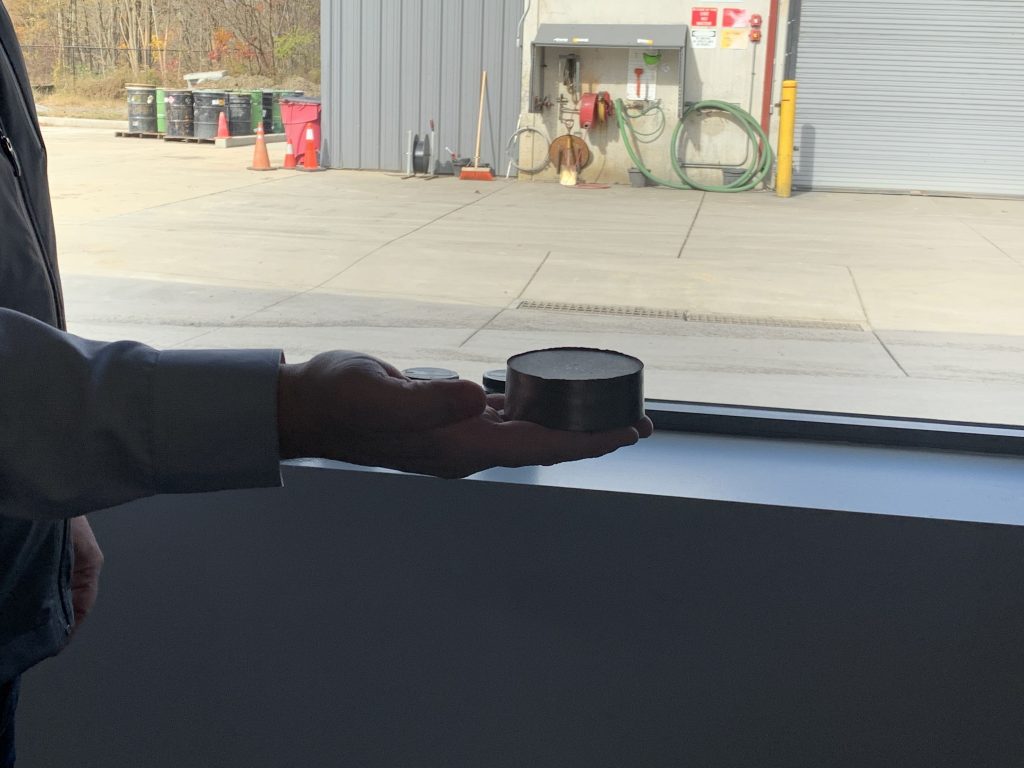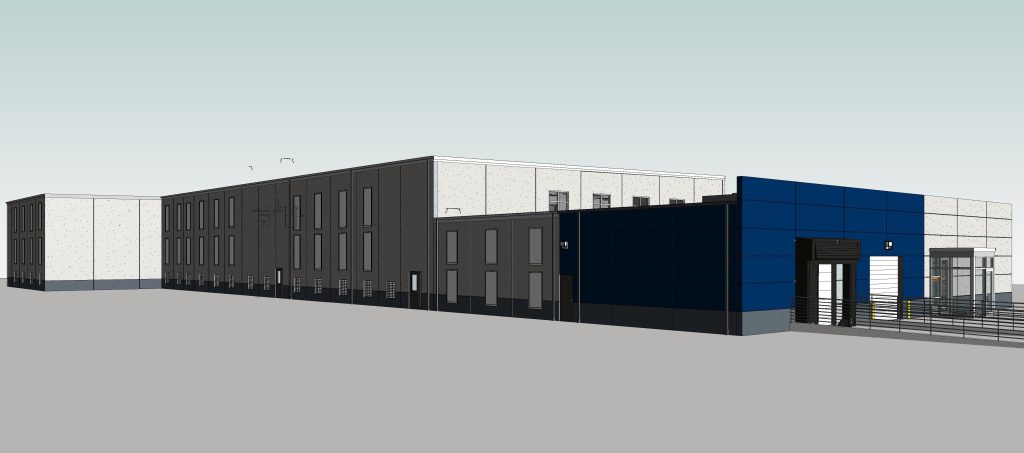Nominations for the 2022 3D Printing Industry Awards are now open. Who do you think should make the shortlists for this year’s show? Let us know by casting your vote now.
Plasma technology developer 6K has provided a rare insight by inviting 3D Printing Industry into its powder production facilities and some of the key drivers behind their rapid expansion.
Those familiar with the firm will already know that its 3D printing-focused 6K Additive and battery-oriented 6K Energy divisions use its UniMelt reactors to recycle metal waste into sphericalized powder material for metal 3D printing. This microwave plasma process allows for up to 100% of millings, turnings and other discarded materials to be reused in a process that’s said to improve yields and drive circularity on the shop floor.
With 6K’s technology only reaching a proof-of-concept stage in 2018, it has moved on fairly rapidly since. Having first ‘struck plasma’ with a UniMelt system in 2020, the company has gone on to get four reactors operational at its Pittsburgh facility, and two more active in North Andover, with demand for these said to have soared in the last six months.
That said, the 20-foot-high nature of 6K’s UniMelt systems means that they don’t exactly get brought to trade shows, and many don’t get to see how they work in person. Likewise, the nature of the firm’s business units raises questions about where its target markets lie and how their reliance on the same technology creates a cross-over.
3D Printing Industry headed over to 6K’s Pittsburgh factory earlier this week to answer these questions and more. As well as getting the grand tour, attendees got the inside scoop on where the technology sits and what 6K Additive President Frank Roberts referred to as the “market forces pulling it in different directions” into new sectors and applications.

Breaking down the UniMelt process
Before touring the 6K’s Pittsburgh factory floor, we saw a breakdown of the UniMelt system’s inner workings and its benefits over traditional methods of metal powder production. Initially commercialized at the MIT Plasma Science and Fusion Center in 2008, the technology involves preparing used materials via cleaning, milling, and resizing, yielding an ‘engineered feedstock.’
This material is then fed into a reactor, which is treated with a plasma that transforms it into a spherical powder with uniformly-distributed particles. Compared to plasma atomization methods, the likes of which are being used for 3D printing powders by Tekna and PyroGenesis, the 6K team said UniMelt can improve usable powder yields from 25-30% to as much as 100%.
According to Roberts, the surface tension generated on particles as part of the process also forces them into a perfectly-spherical shape, “no matter how ugly” materials are when they enter the reactor while reducing the time it takes to change grade of powder from “a week plus,” down to just a single day. Likewise, when it comes to reactive materials, he highlighted how the UniMelt reactor can add or take away oxygen in a way that restabilizes them and allows powders to be tailored to certain use cases.
When asked whether the technology’s much-touted energy efficiency and sustainability benefits were its USP, Roberts suggested that quality comes first, saying that “you have to check that box before anyone even talks to you.”
6K’s CMO Bruce Bradshaw added that the fact big powder users like Airbus and EOS are increasingly focusing on carbon credits could provide it with an opportunity. If the firm can become the first to assign a carbon credit for each kilo of its powder, Bradshaw said this could offer manufacturers another reason to turn to its process on top of its existing cost-benefit i.e., “offering better value for scrap.”

Exploring 6K’s Pittsburgh plant
Having been given a deep dive into 6K technology, members of the press were then granted a walking tour of its Pittsburgh facility. From the outset, it was made clear that safety had been made such a priority across the site that visitors didn’t even need to wear protective gear. This is because each part of the facility has been fitted with sensors and control units designed to automatically check for potential hazards and blast-proof doors capable of containing fires.
As attendees entered the complex, they were greeted by a warehouse full of end-of-life parts that had been shipped in and were being prepped for recycling, including huge aerospace builds. Roberts explained that not all of these would be broken down with the UniMelt, as those with thicker cross-sections could be better suited to melting. Described as “the most technically complex” process at the facility, it was said each would be individually evaluated and sorted for reuse.
Guests were then shown through to 6K’s alloy building, where materials are turned into puck-like chunks before being packed into rolls and shipped to users. At this stage, the level of automation at the facility began to set in, as the press showed barrels of material being automatically loaded into presses, which squeezed out around 25% of their leftover water content.
As the tour went on to the powder production side of the plant, where 6K Additive’s four operational UniMelt systems are housed, Bradshaw revealed its plans for further automation. In the next phase of its roll-out, the firm’s CMO said it intends to automate the feeding and collection of powders from its reactors by the end of 2023 and in the future, to ultimately turn the entire operation into a ‘lights out’ facility.
Toward the end of the visit, attendees were allowed to examine and scale a UniMelt system for themselves in a part of the site that was obviously set up for expansion. On one side, there was a shuttered door to bays in which 6K is setting up six more reactors, with the first two of these due to be online by Q2 2023. Eric Martin, COO of 6K Additive, explained that even before their installation, the facility has an annual powder capacity of 300 metric tons, and its newer machines are being built around the “learnings” gathered via the development of their predecessors.

Analyzing UniMelt’s applications
Following the factory tour, the media were treated to presentations about how the powders produced using UniMelt technology are applied in practice. The first of these was led by Mark Straszheim, Advanced Materials Lead at Cumberland Additive, a 3D printing bureau targeting clients in the space, aerospace, defense, and oil & gas sectors.
Straszheim went into how his firm specializes in turning early design concepts into parts ready for higher throughputs via its suite of low-volume production services. Since gaining the defense-critical ITAR and AS9100D certifications, the firm has gone on to make a second home for itself at Neighborhood 91, a collaboration of like-minded 3D printing firms based at the nearby Pittsburgh International Airport.
Straszheim explained that it has developed close ties with partners to the point that they now exchange resources. Not only does the firm pool spares with another manufacturer, but it shares a supply of noble gasses, and 3D printing facilitators, which can otherwise raise cost-per-part. 6K Additive’s role in all of this has been to begin supplying it with recycled materials. During characterization, Straszheim said these had properties “at least” on a par with those of standard powders, and he opened the door to further 6K collaboration.
The event’s second speaker, the Quadrus Corporation’s Director Joe Sims, talked attendees through how his firm has benefited from working with 6K. Though traditionally a developer of aviation flight control and guidance software, Quadrus moved into 3D printing in 2014 with the adoption of its first Concept Laser machine. Since then, Sims said Selective Laser Melting (SLM) has gained the confidence of the Marshall Flight Space Center, and shown considerable part consolidation potential.
However, when his company initially set out to expand the technology’s aerospace applications with the creation of a tungsten-rhenium, it nearly gave up. Sims said it was only when the Quadrus team realized the impact of its material’s particle size and shape on performance that it started to make breakthroughs. This is where 6K’s technology really came into its own, as it enabled the creation of a spherical, lowly-oxygenated material, which “spreads beautifully” in SLM machines.
Using this feedstock, Sims said his company has since been able to 3D print rocket motor nozzle parts, which have undergone seven hot-fire tests. Compared to the Carbon Matrix Composites (CMC) traditionally used to make such components in around 14-15 months, the aerospace veteran suggested that with tungsten-rhenium, users “can make the same part in a month… at a fraction of the cost.”
Moving forwards, Sims outlined how the material’s extremely high heat resistance could make it ideal for addressing emerging hypersonic flight applications. Already, the powder has proven capable of withstanding exposure to 2,300°C plasma for ten minutes, and though Sims described it as “one of the most expensive materials on the planet,” he said 6K’s machines allow its utilization to be optimized.

Where next for UniMelt technology?
Next up on 6K’s agenda will be the expansion of its Pittsburgh facility so that it can cope with a reportedly rapid rise in demand for nickel, titanium, and refractory powders there. This will see the addition of a further 20,000 sq. feet of powder capacity with four new UniMelt microwave plasma systems and the construction of a new 15,000 sq. foot feedstock preparation building.
“Global unrest has shed a major spotlight on our nation’s supply chain vulnerability for critical materials,” explained Roberts. “This, in combination with our consistent product quality, sustainability benefits, and the fact that we are a domestic supplier, have contributed to increased commercial activity with key strategic customers.”
“This expansion will help us meet customer demands in the coming years and ensure efficiencies in current and future operations.”
So where else could 6K’s UniMelt technology be applied? When asked about the prospect of a crossover between the firm’s 6K Additive and 6K Energy businesses, Roberts claimed that “everyone’s investing in electrification,” while Bradshaw said each of its divisions continues to benefit from investments being made in UniMelt, with the US Department of Energy recently plowing in another $50 million.
With 6K Additive entering full-scale powder production, it’s also thought to be proving the technology’s viability to large OEMs on the 6K Energy side of things. Describing the two businesses as “joined at the hip,” Roberts revealed that one customer was even working with both simultaneously and suggested that a more direct correlation could be in the offing, especially in sectors like automotive.
As for its material palette, 6K can recycle 11 variants of copper, nickel, aluminum, titanium, and stainless steel, with more work on refractory metals on the horizon at its North Andover facility. The firm also continues demonstrating its technology’s efficacy via case studies like Morf3D. Rounding off the day, Bradshaw said these “are valuable with third parties that have aerospace and defense customers,” especially when they show powders are “well within specification.”
To stay up to date with the latest 3D printing news, don’t forget to subscribe to the 3D Printing Industry newsletter or follow us on Twitter or liking our page on Facebook.
While you’re here, why not subscribe to our Youtube channel? featuring discussion, debriefs, video shorts and webinar replays.
Are you looking for a job in the additive manufacturing industry? Visit 3D Printing Jobs for a selection of roles in the industry.
Featured image shows the 6K Additive facility in Pittsburgh, Pennsylvania. Photo by Paul Hanaphy.



